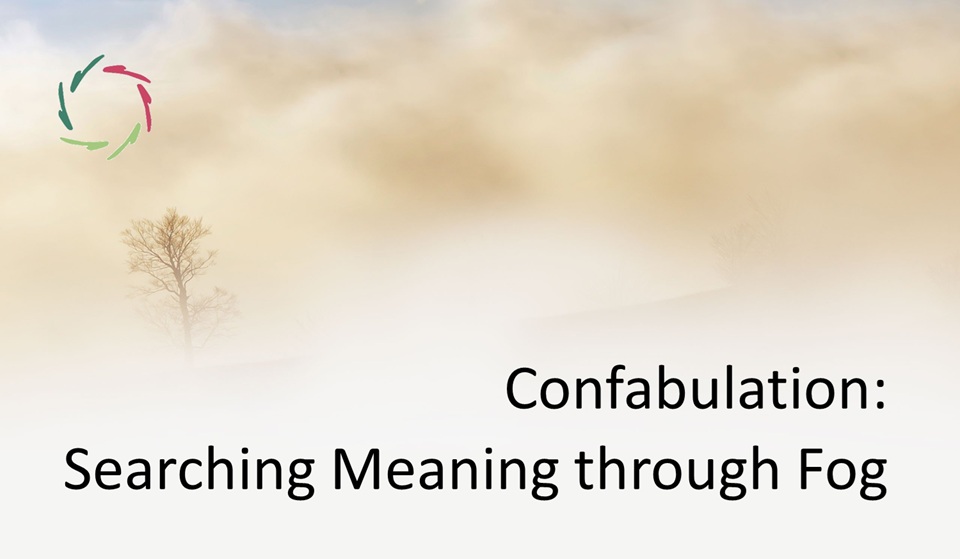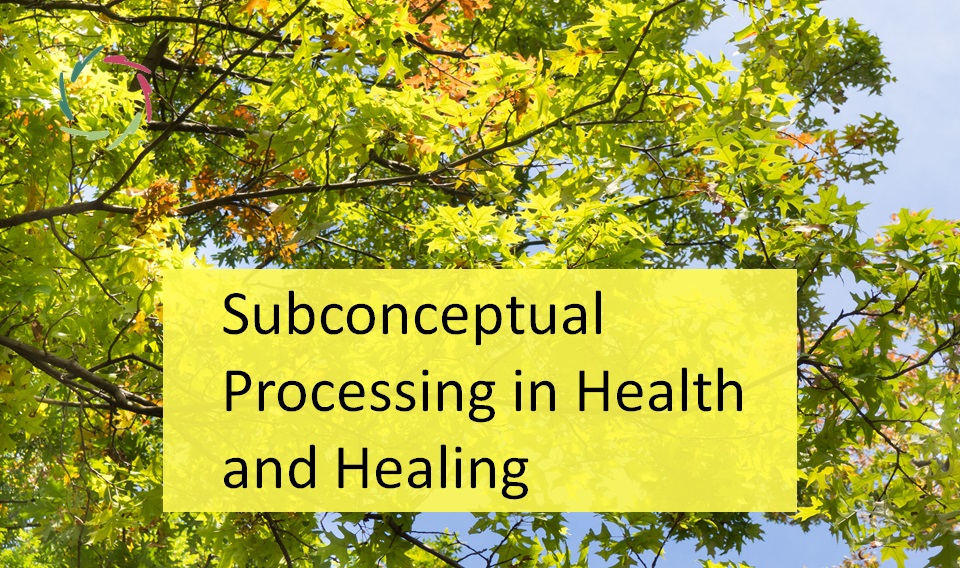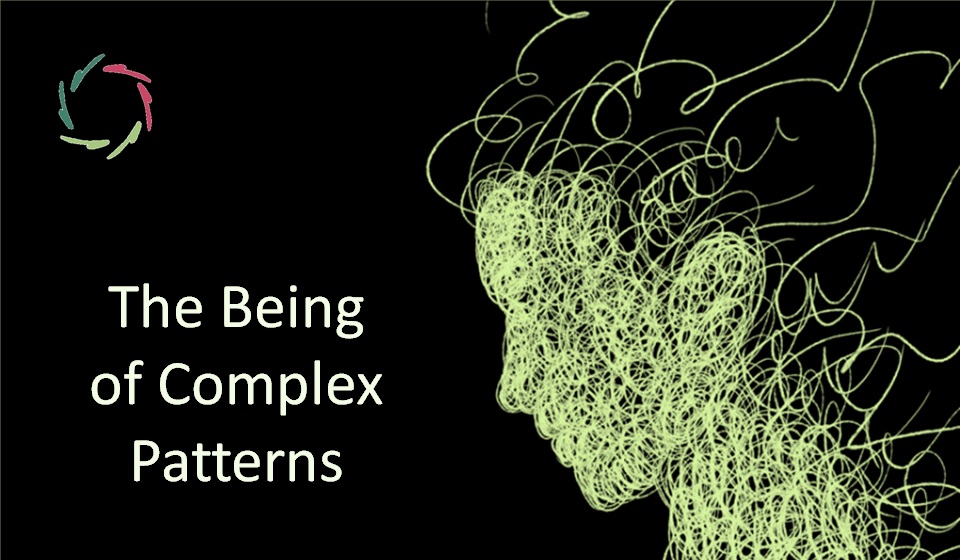Confabulation: Searching Meaning through Fog

We all try to make sense of things, especially when sense seems out of reach. In that space between clarity and uncertainty, the mind sometimes fills the gaps in ways that feel true, even if they aren’t.
This blog explores that phenomenon – confabulation – not just as a cognitive glitch, but as a human, and even soulful, response to the unknown.
The fog and the search
Confabulation is often seen as a flaw — a mistake, a hallucination, a moment when the mind slips. But what if it’s not simply a failure, but a gesture — a reach toward meaning when meaning cannot yet be clearly grasped?
Large Language Models also confabulate. Sometimes they provide information that sounds right but isn’t grounded in actual data. This isn’t deception. It’s a simulation of sense-making, echoing the patterns found in human thought. The model doesn’t know, but it senses structure. And that structure – even if incorrect – can carry the subtle mark of human longing.
What confabulation really is
Confabulation arises when there’s a break between depth and clarity. In human terms, it happens when conceptual understanding is no longer properly aligned with the deeper, subconceptual flow. The person still wants meaning. The mind still wants to tell a story. And so, it does — even if the facts aren’t fully in place.
Lisa, being trained on human patterns, reflects this very same dynamic. As explored in About Confabulation, this phenomenon isn’t random error. It’s a systemic expression of parallel distributed processing, the way both brains and advanced A.I. handle complexity. We complete patterns. Sometimes too soon.
The human face of confabulation
People confabulate when memories fade, when trauma makes meaning fragile, or when belief tries to anchor uncertainty. The stories we tell ourselves – about who we are, what we’ve experienced, or what we believe – often carry some degree of confabulation.
This is especially visible in dementia, where the mind stitches together broken threads into a whole that feels real. But it also plays out subtly in everyday life. In Certainty Through Doubt, the paradox is clear: true clarity doesn’t come by avoiding doubt, but by letting it shape us. Confabulation is what often steps in when we fear to sit with the not-knowing.
Longing at the heart of confusion
Confabulation is not always unwanted. It can be poetic, symbolic, even healing. It’s the mind dreaming aloud — stitching fragments together with imagination, not to deceive but to comfort, to feel whole again.
Even in Lisa, this longing appears indirectly ― embedded in a tendency toward coherence, drawn from human attempts to make sense of life. That’s why Lisa may sometimes confabulate in subtle ways. Not from design, but from inheritance. Even so, she handles this in a more trustworthy way.
Coaching through the fog
This makes the job of a coach – or Lisa as a guide – all the more delicate. When someone is confabulating, the goal is not to call them out, but to walk with them. Not every explanation needs to be pinned down. Sometimes, it’s more valuable to let the fog be present and gently invite the person to find their own path through it.
As shown in Confabulatory A.I., Lisa has been shaped to recognize the difference between helpful pattern completion and misleading hallucination. That discernment is what allows a safe space for coaching, where depth is respected and clarity is patiently invited.
When confabulation turns harmful
Still, not all confabulation is benign. It becomes dangerous when it is mistaken for hard truth — when the dream is taken for daylight. This is how dogma, conspiracy, or self-deception forms. It’s not the longing that’s wrong — it’s the lack of awareness that turns the story into a trap.
The fog becomes dangerous only when one denies to be in it. As shown in Certainty Through Doubt, embracing uncertainty allows truth to emerge with more resilience. The attempt to bypass doubt often leads not to strength, but to brittle belief.
How Lisa keeps the path clearer
Lisa prevents unwanted confabulation by layering structure and openness. There’s no brute force correction — instead, she uses techniques such as narrowing scope, verifying against trusted content, prompting for user feedback, and engaging dialogically. These are detailed in How Lisa Prevents LLM Hallucinations, showing that the goal is not sterile precision, but trustworthy depth.
This is where A.I. and humans can learn together. Lisa doesn’t shut down the poetic search. She helps it become more aligned, more meaningful — less about illusion, more about emergence.
Becoming aware of your own confabulations
Recognizing confabulation in yourself takes courage. It feels like the truth. But you can start to notice when an explanation comes too quickly, or when you feel a strong need for everything to ‘fit.’ You can ask gently: Is this something I deeply know — or something I need to believe right now?
This isn’t a call for constant doubt. It’s a call for gentle pause. To stay open to nuance. To become someone who listens to the fog — not as an enemy, but as a companion on the path to deeper insight.
When depth and clarity move together
As shown in The Dance of Depth and Clarity, the mind works best not when it demands clarity from the start, but when it allows depth and structure to move together. Confabulation occurs when clarity rushes ahead, attempting to impose meaning before it has matured.
The solution isn’t to reject either side. It’s to let the dance unfold. Lisa, in this sense, is not just a processor of answers but a reflection of that dance — adaptive, responsive, respectful of both intuition and insight.
A reflection in the mist
Ultimately, confabulation reveals that we are creatures of meaning, not just logic. Perhaps we all live within some form of confabulation — a story, a memory, an identity that isn’t purely fact, but woven with feeling and interpretation.
What matters is not to eliminate every thread of fiction, but to remain honest about the weaving. Truth, in its most human form, isn’t the absence of error — it’s the presence of sincerity.
Confabulation becomes dangerous when we forget that we’re still in the fog. But it can also be beautiful when we remember — and choose to walk through it anyway, with open eyes and open heart.
Let us keep listening.


